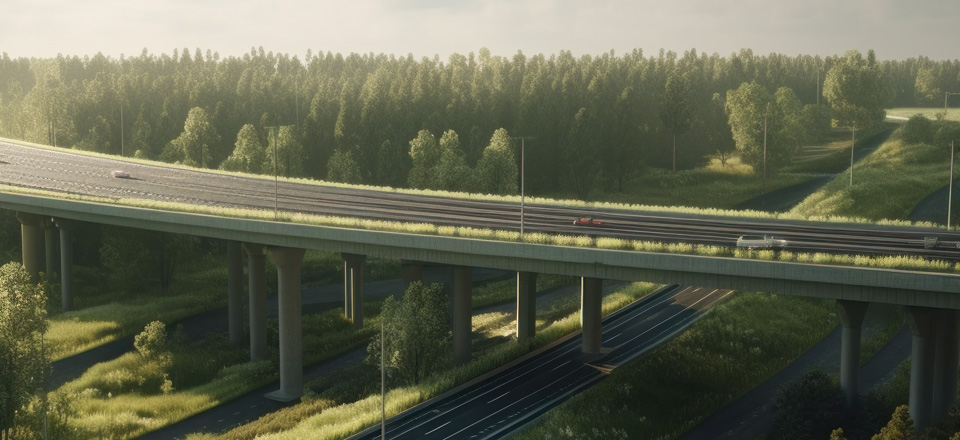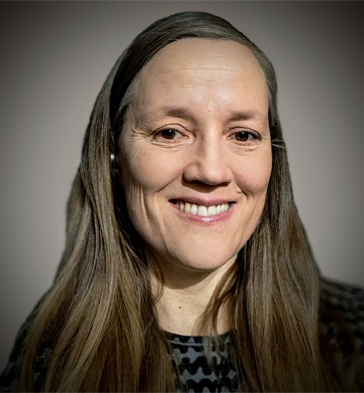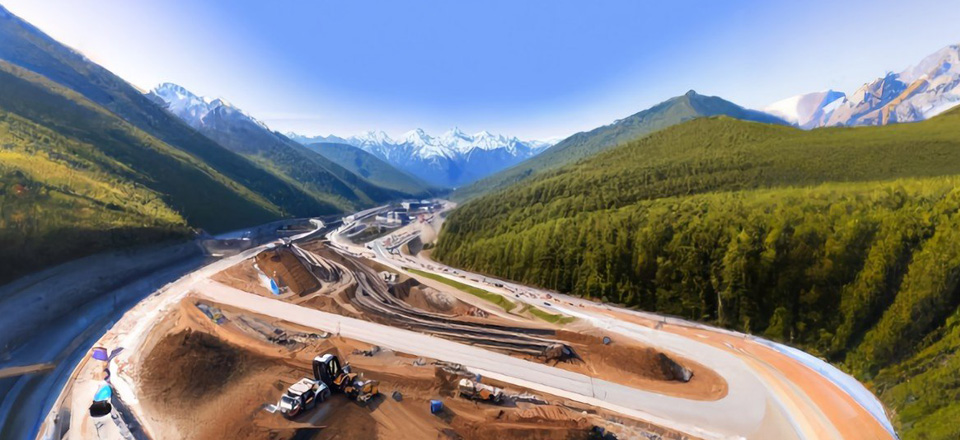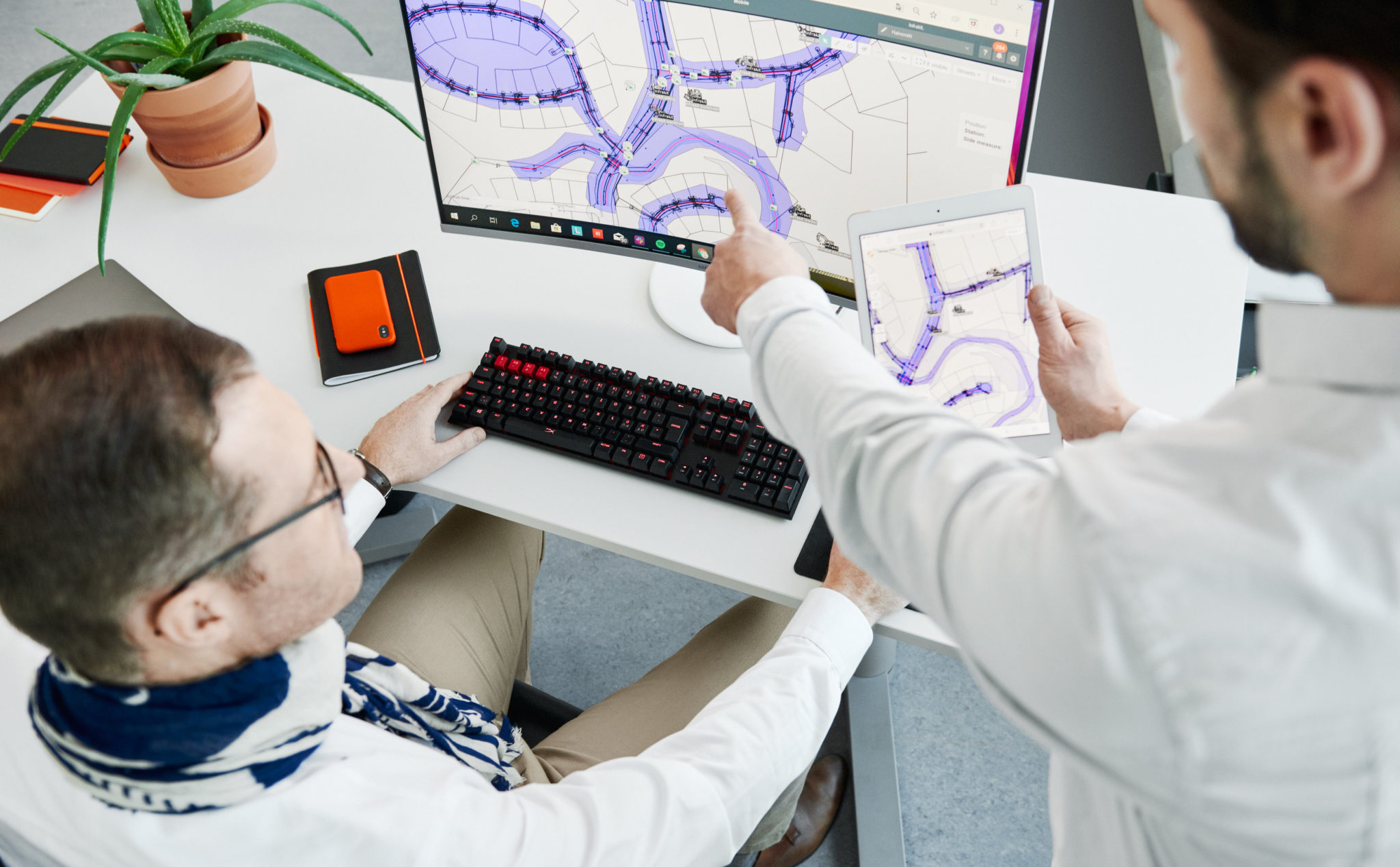Marja-Terttu Sikiö von Destia: Umweltfragen und Nachhaltigkeit sind zunehmend wichtige Themen bei der Planung von Infrastrukturprojekten

Marja-Terttu Sikiö von Destia: Umweltfragen und Nachhaltigkeit sind zunehmend wichtige Themen bei der Planung von Infrastrukturprojekten
Der Infrastruktursektor ist eine der umweltschädlichsten Branchen weltweit. Der Großteil der Emissionen entsteht nach der Inbetriebnahme, aber der Bau selbst hat auch Auswirkungen auf die Umwelt.
Unabhängig von der Branche werden Umweltfragen und Nachhaltigkeitsziele zu immer wichtigeren Gesprächsthemen, und die Messlatte liegt hier hoch. Beim Bau von Infrastruktur müssen, um diese Ziele zu erreichen und die Emissionen zu reduzieren, neue technologische und materielle Möglichkeiten erforscht und die Verfahren in gewissem Maße geändert werden. Man geht auch davon aus, dass die Digitalisierung helfen wird, die Umweltauswirkungen von Bauprojekten abzumildern. Finnland hat dafür eine gute Ausgangslage, da die Digitalisierung der Infrastruktur in den vergangenen 10 Jahren mit großem Aufwand vorangetrieben wurde.
Um Nachhaltigkeit im Bau von Infrastruktur zu erreichen, müssen wir im großen Ganzen denken. Destia hat beispielsweise eine lange Tradition, sich für soziale Nachhaltigkeit einzusetzen, etwa für Arbeitssicherheit und das Wohlbefinden der Angestellten. Allerdings ist Nachhaltigkeit in der Branche zu einem häufigeren Thema geworden und es wird immer mehr über Emissionen und die gesamten Auswirkungen auf die Umwelt gesprochen.
Wir haben mit Marja-Terttu Sikiö von Destia gesprochen, um herauszufinden, was sie von dem Thema hält und wie eine Veränderung erreicht werden kann.
Wie sehen Sie die aktuelle Situation in der Baubranche?
Ich sehe es als sehr positiv an, dass Umweltfragen und Nachhaltigkeit, wie z.B. die Klimaarbeit, zunehmend in Projekten berücksichtigt werden, auch bei kommunalen Entwicklungsprojekten. Für Destia sind Themen der sozialen Nachhaltigkeit, wie etwa Arbeitssicherheit und das Wohlbefinden der Angestellten, seit Langem wichtig.
Sehen Sie in der jetzigen Situation etwas, das Fortschritt verhindern oder verlangsamen würde?
Ich glaube, dass die größten Hindernisse fehlendes Wissen und das Fehlen von mutigen Experimenten in der Praxis sind. Natürlich sind wir vorsichtig, wenn es um große Projekte und lange bestehende Strukturen geht. Um Fortschritte in der Branche zu erreichen, sind mehr Beispiele für erfolgreiche Projekte, aber auch für Herausforderungen und verbesserungswürdige Bereiche erforderlich. Wir brauchen außerdem mehr Unternehmen, Kommunen und Menschen, die bereit sind, diese Veränderungen zu verinnerlichen und Pionierarbeit zu leisten.
Wie wird sich die Situation Ihrer Meinung nach in Zukunft entwickeln?
Ich glaube, es wird eine noch größere Reihe an Anforderungen und Perspektiven der Nachhaltigkeit geben, die bei neuen Projekten berücksichtigt werden müssen. Neue Praktiken werden zuerst in großen Pionierprojekten, wie etwa in Allianzprojekten, eingeführt werden. Sie bieten eine gute Möglichkeit Dinge auf eine neue Art und Weise zu erledigen, in enger Zusammenarbeit mit den verschiedenen Akteuren. Best Practices werden dann, wegen des Erfolgs der Pioniere, auf andere Projekte angewandt.
Was sind Ihrer Meinung nach die wichtigsten Faktoren, um einen Wandel herbeizuführen und Emissionen zu kontrollieren?
Der Schlüssel ist die Entwicklung und Anwendung von Fähigkeiten, Kompetenzen und neuen Praktiken durch Pilotprojekte. Zudem haben wir mit der Digitalisierung die Möglichkeit, unsere Wissensbasis deutlich zu vergrößern. Was die Transportemissionen angeht, so entstehen die meisten Emissionen bei der Transportinfrastruktur während der Nutzung. Das trifft auch auf Straßenbahnprojekte zu. Diese Emissionen werden durch Fortschritte in der Fahrzeugtechnologie und bei der Stromerzeugung reduziert.
Abgesehen vom Betrieb wird der Großteil der Emissionen durch einige wenige Materialien wie Stahl, Beton und Asphalt verursacht. Diese Emissionen können durch die Verwendung recycelter Rohmaterialien reduziert werden. Auch die Wahl der Bau- und Transportmaschinen spielt eine Rolle. Eine stärkere Integration der Datenerfassung über die gesamte Produktionskette hinweg und die Nutzung dieser Daten für die Planung und Umsetzung von Emissionsminderungen auf den Baustellen ist weiterhin erforderlich.

Marja-Terttu Sikiö arbeiten seit 14 Jahren im Design- und Expert-Services bei Destia. Aktuell arbeitet sie als Projekt- und Teamleiter im Environmental Assessment Department.
Destia
Destia ist Finnlands größter Akteur im Infrastrukturbereich und Teil der internationalen Colas-Gruppe. Das Unternehmen entwickelt, baut und unterhält Infrastruktur, die für eine gut funktionierende Gesellschaft notwendig ist. Das sind unter anderem Stromnetze, Brücken, Straßen und Schienen. Destia verbessert Städte durch die Entwicklung von Telematik- und Beleuchtungslösungen und durch das Angebot einer Vielzahl von Dienstleistungen für die Verwaltung von Verkehrs- und Infrastrukturanlagen.
Jere Syrjälä
March 21, 2023
Book a Demo
Discover how Infrakit connects your entire infra project operations and drives value to every part of your business.


Recent Comments